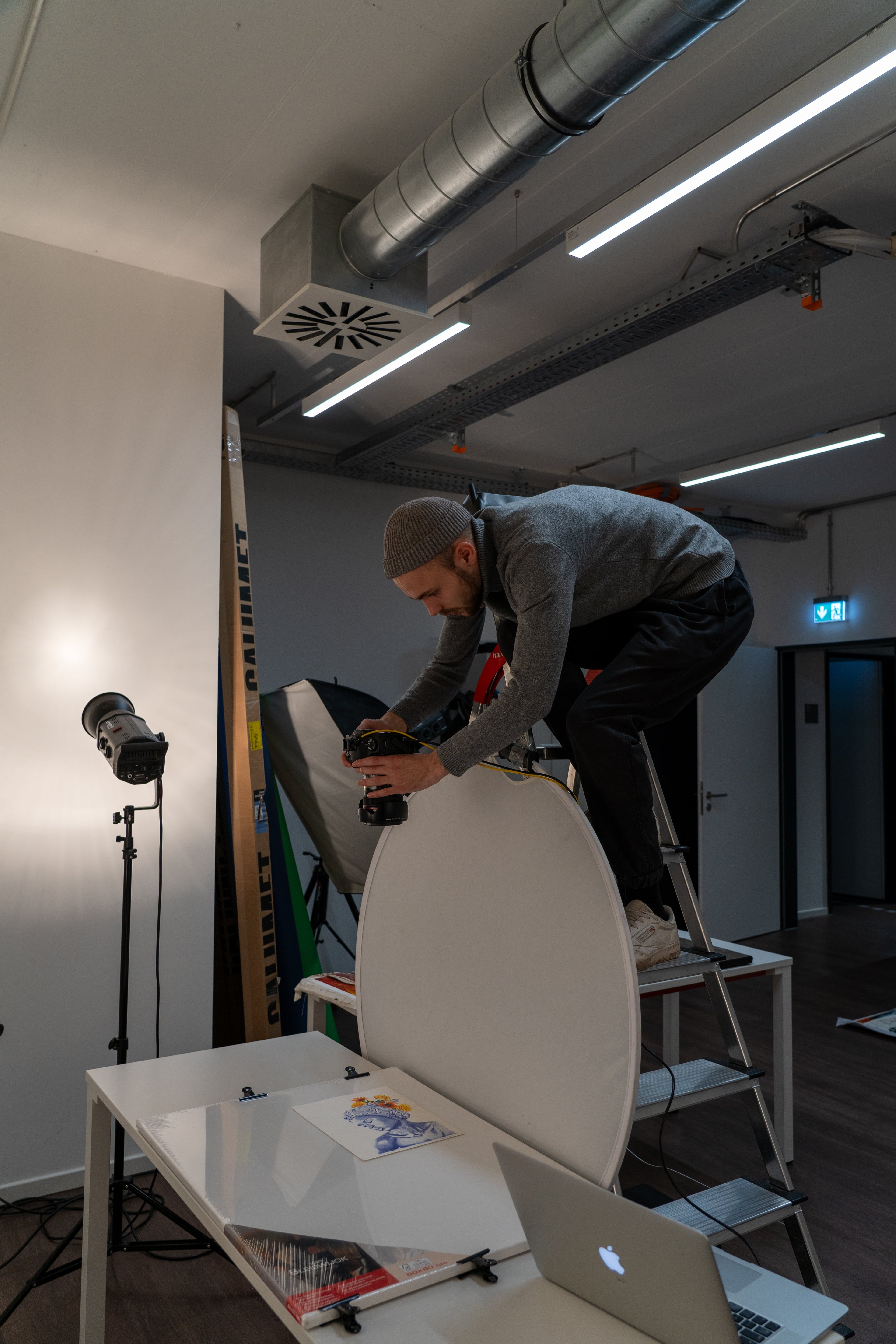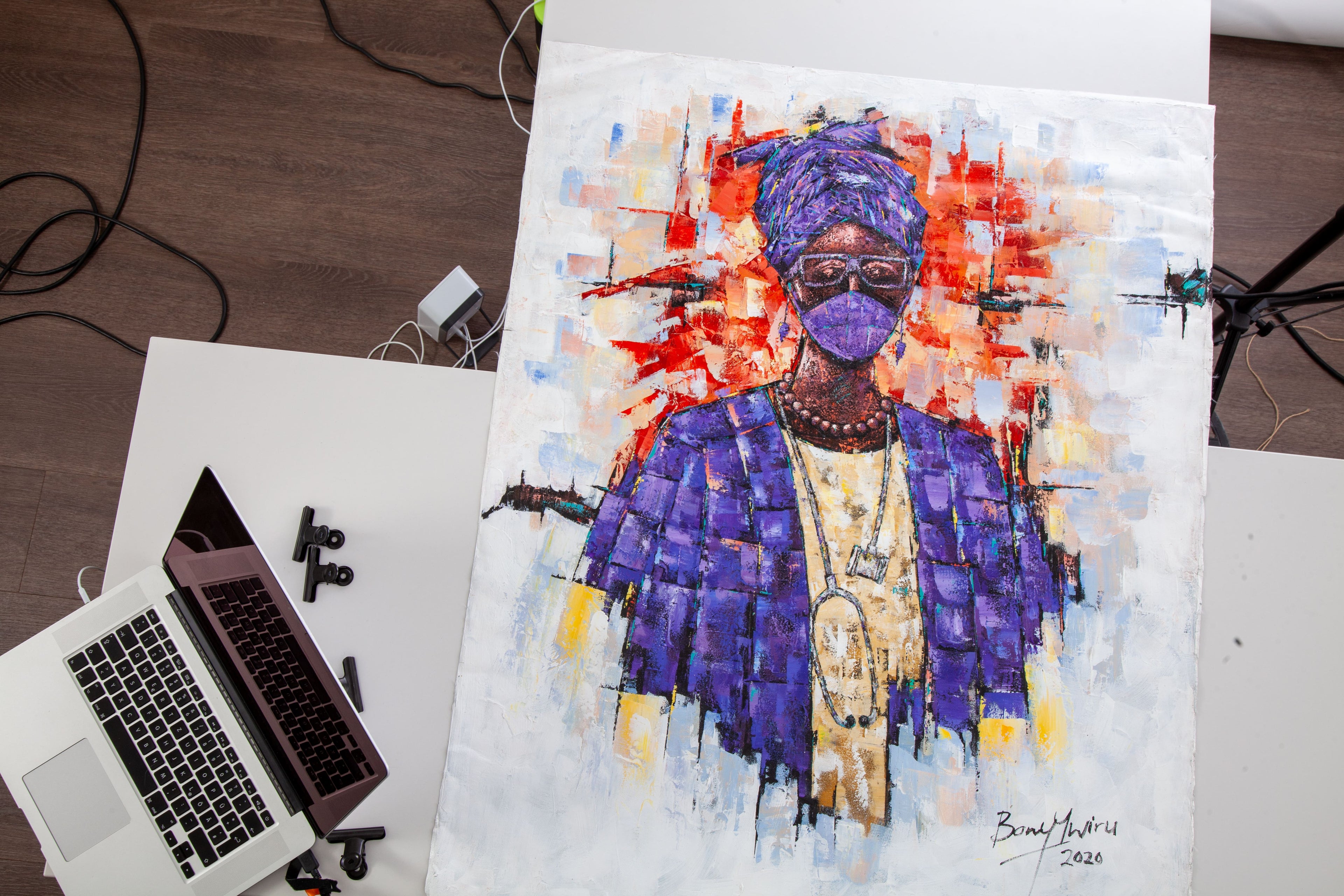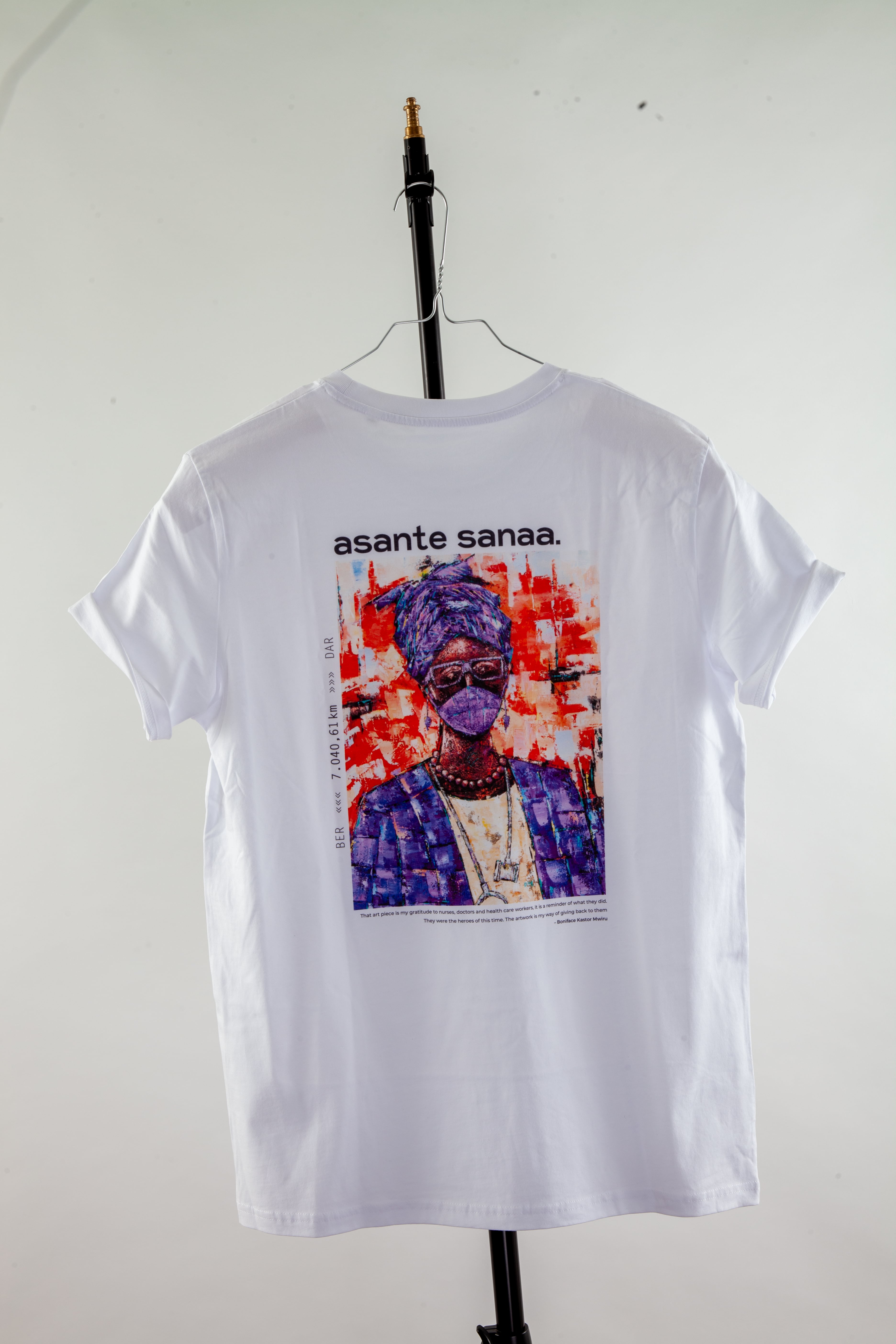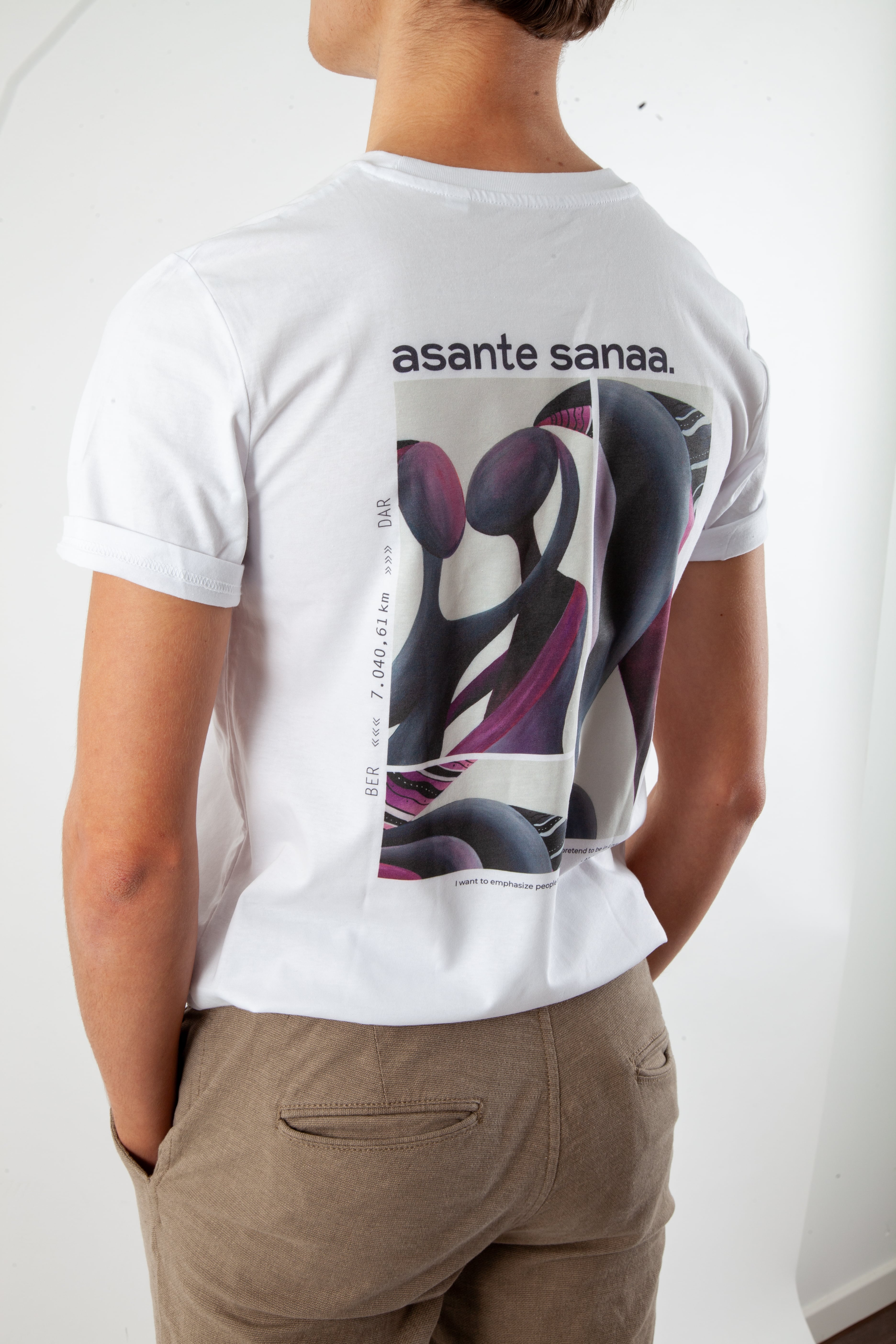As we all know, the idea is followed by implementation and soon you are confronted with the first challenges. First of all, we had to build up a network of artists in order to get enough designs. Due to the high demand and good networking, this was easier than expected. The problem lay elsewhere: How was the collection and digitization of 24 large artworks from 7,000 km away supposed to take place? The solution was this: Each artist would send their work to Moshi, from where our partner, Matema KG, would ship the artworks to Germany, where we would finally digitize them. Easier said than done. In Tanzania, the postal service doesn't work like it does in Germany. Many of the works had an adventurous journey across the country and across national borders ahead of them. They were sent by bus and with telephone numbers instead of addresses. Some of the artworks ended up in Tanzania at four different stops in Zanzibar, Dar es Salaam, Bagamoyo and finally Moshi and were transported by bus, train and boat. In the end, however, all the artworks arrived in Moshi undamaged.
The shipment was sent from Moshi to Germany. The journey continued through six different countries and nine different cities until all the artworks finally arrived intact in Fulda on November 11. After the canvases had been measured, the artworks were transported from Fulda to Göttingen by car, driven by one of our members. In Göttingen, they were handed over personally to another member. From there, the journey continued to the Hamburg photo studio, where the artworks were finally ready for their photo shoot. The transportation from the artists to the Hamburg photo studio alone took almost one and a half months. In the meantime, however, our team was not idle. We have been working diligently on marketing and crowdfunding concepts, as well as our website, so that we can really get going with the arrival of the artworks!
After arriving in Hamburg, the artworks had to be digitized as quickly as possible so that work could begin on the designs. In theory, it was a simple job: rent a photo studio, organize a camera and photographer and then shoot the motifs. Unfortunately, the whole thing turned out to be a really difficult task. So on 24.11.2020, one of our team members spent seven full hours in the photo studio from 9:00-16:00. We were lucky that the freelance photographer Maischa Souaga supported us and that we were allowed to use the Htk Academy photo studio. The problem was that the canvases of the paintings were not stretched and therefore had to be stretched across two tables on the floor. The motifs could then be photographed and digitized from a ladder. Another problem turned out to be the size of some of the artworks. In some cases, our photographers found themselves between the pipes of the studio's ventilation system and performed acrobatic feats to capture every motif at the perfect angle. It was also very difficult to capture the exact effect of each work of art. Many of the paintings have a special effect simply because of the colors used. Glossy effects, plasticity and structure are particularly difficult to capture with a camera and the original will always look a little different. The sharpness of our camera also reached its limits with particularly finely worked motifs. After a whole day without a break, but with university lectures on the side, we had finally photographed the 24 works of art and were ready to sort out around 3000 pictures.






